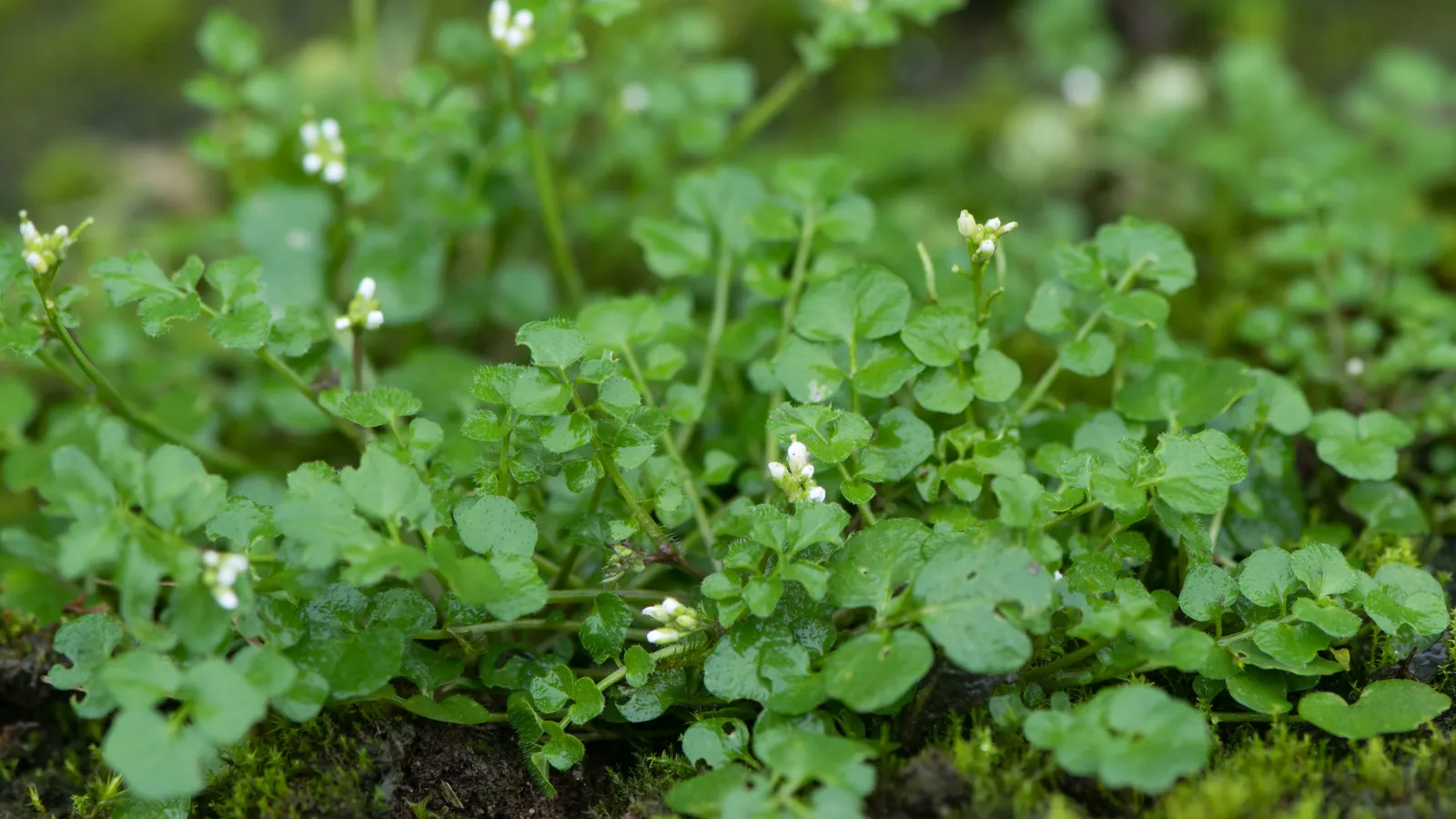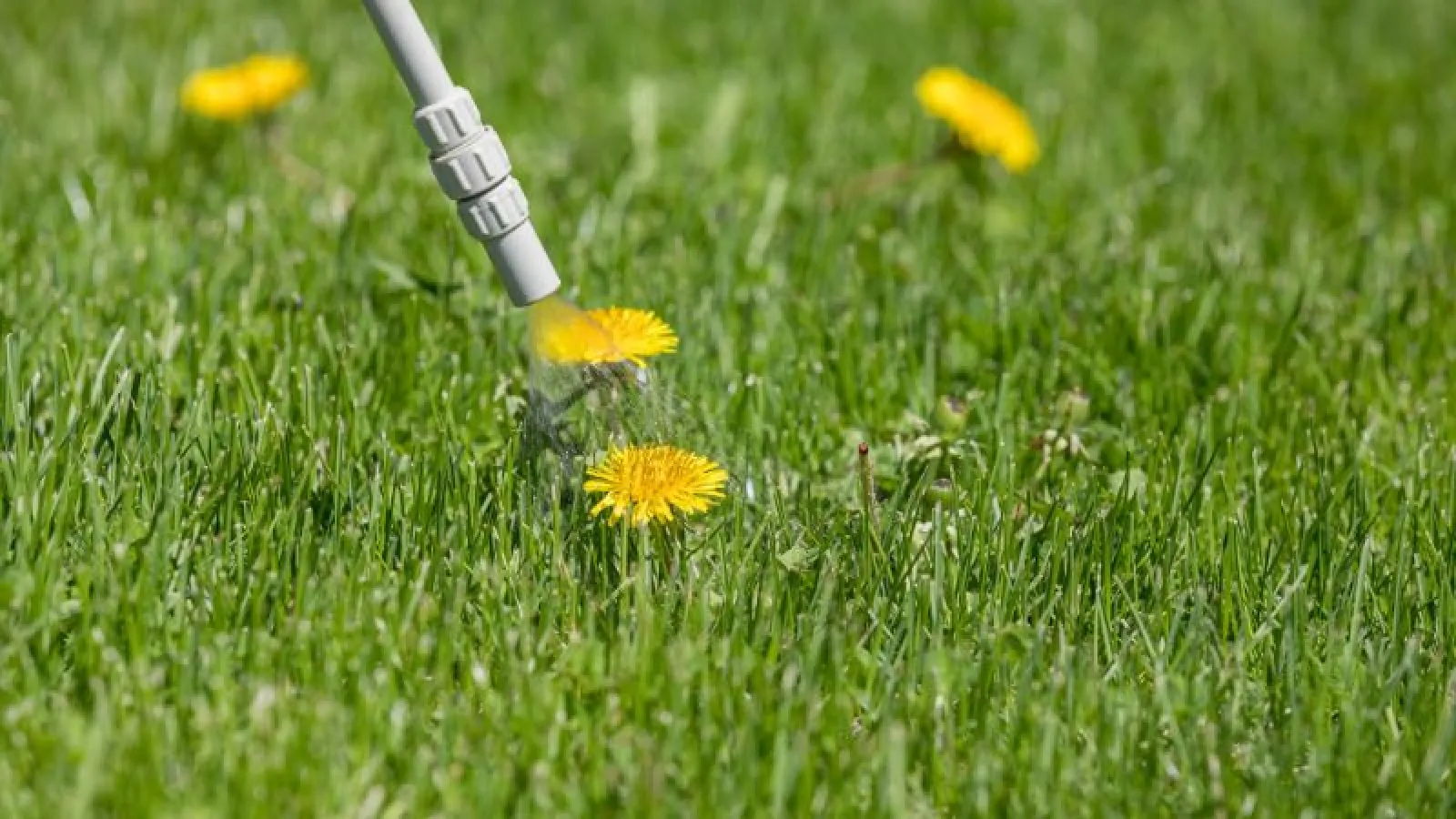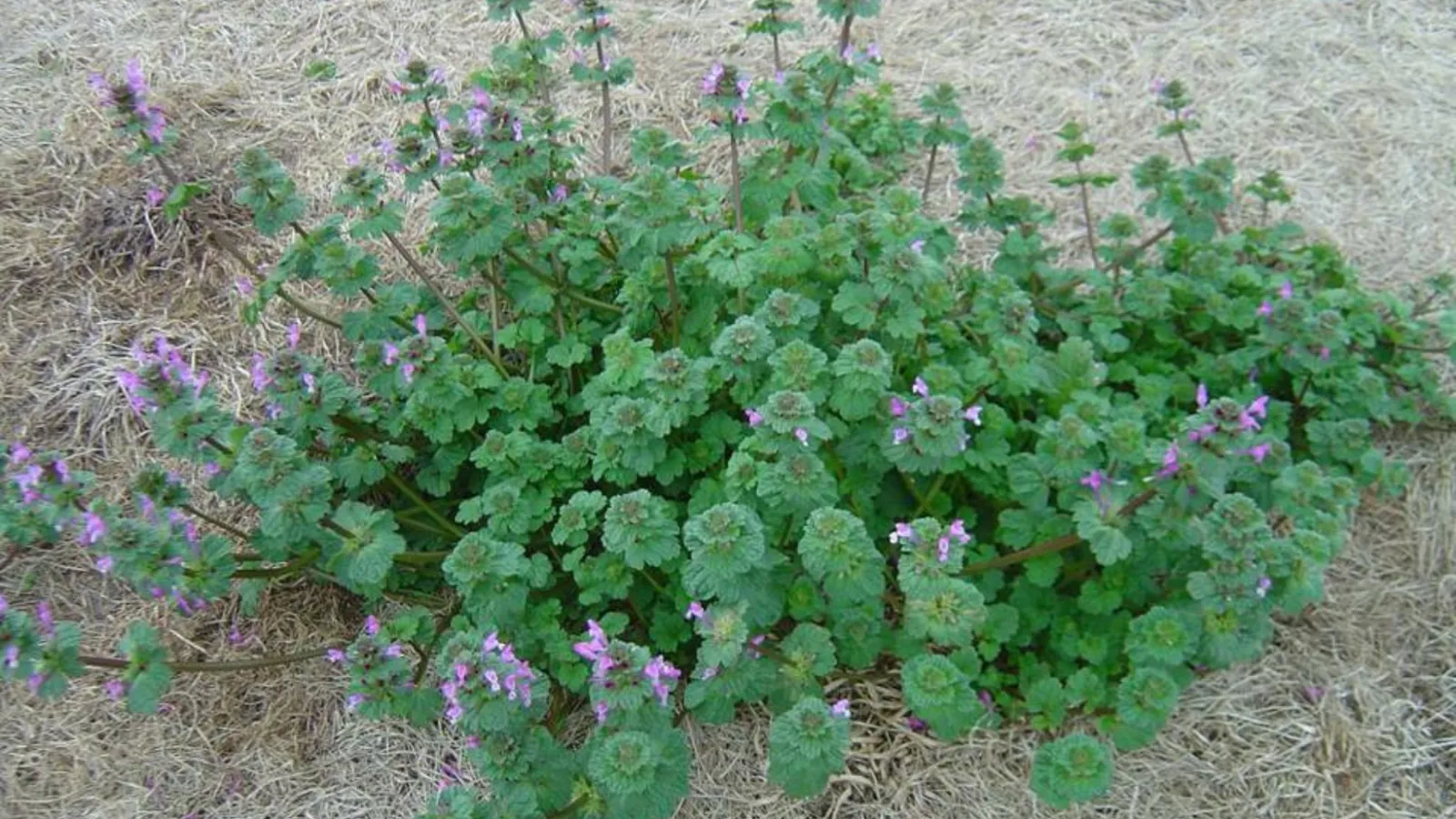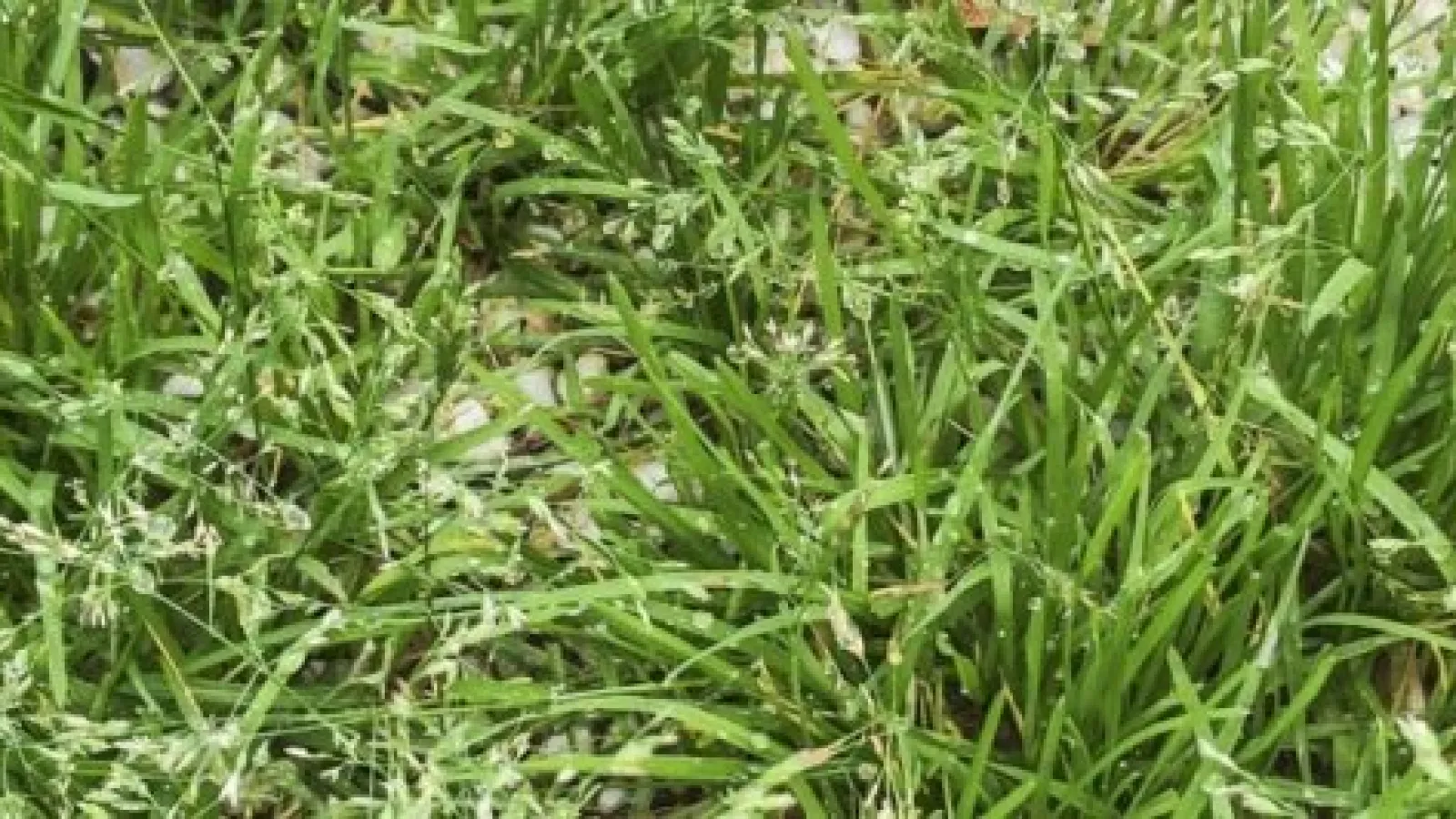
Pesky Winter Weeds
While warm-season lawns are dormant in the winter, many weeds are just starting to become active. These weeds are known as winter weeds. They can be annual, biennial or perennial in regards to life cycles, and be very difficult to control. Annual winter weeds germinate in the fall and winter and grow actively in the spring. After they flower in spring, they die and disappear before the summer. But only to return in fall or winter when new seeds germinate.
Mouse-ear chickweed, hairy bittercress, henbit, deadnettle and poa Annua are common annual winter weeds that may invade your dormant lawn this fall and winter. Learn more about each of these winter weeds below and take control of your lawn before they do.
Mouse-Ear Chickweed

What it is: A broadleaf weed that normally acts as a perennial in the north; however, here, it has the ability to act as a winter annual weed due to our climate conditions
Time of year: Mouse-ear chickweed germinates by seed from late summer to fall or early spring.
Damage: Mouse-ear chickweed can form dense, mat-like patches that can crowd out desirable turfgrass.
Prevention/Treatment: To prevent this weed in a residential lawn, cultural practices to develop a dense, aggressive turf may help to hinder its invasive qualities. This includes proper mowing and watering,
Hairy Bittercress

What it is: Hairy bittercress is an annual winter weed. The plant springs from a basal rosette and bears 3-9″ stems with leaves that are alternate and slightly scalloped. Tiny white flowers develop at the ends of the stems and then turn into long seed pods.
Time of year: During April and May, populations of hairy bittercress become increasingly visible. This weed prefers a cool, moist soil and is most prolific after early spring rains.
Damage: This pesky weed can displace grass as it grows in the lawn. Its extensive seed expulsion causes this weed to spread quickly through the lawn and garden in spring.
Prevention/Treatment: Encouraging good grass growth is important to preventing hairy bittercress invasions. Pulling out hairy bittercress can often leave the roots behind and is usually most effective with young plants. It’s best to use a weeding tool to dig down and around the taproot to get all the plant material out of the ground. Post-emergent weed control is the most effective and long-term solution.
Henbit

What it is: Henbit is a sparsely hairy winter annual with greenish to purplish, tender, square stems. It is often found under trees and shrubs where grass has a hard time growing.
Time of year: The seeds of henbit sprout in the fall or early winter. When temperatures start to warm in the spring, henbit will grow vigorously and become noticeable in the lawn. In mid-spring, the flowers form. The henbit then produces seeds and dies as the temperatures start to get hot in early summer.
Damage: Henbit will happily take advantage of the thin, moist areas in your lawn, especially those areas that are shaded. Each plant can produce up to 2,000 seeds that can take root and keep it coming around for years.
Prevention/Treatment: A good defense against future henbit problems is to grow a thick lawn so weeds do not have any room to grow. It’s important to find and control the henbit before it flowers. This will prevent the plants from producing and releasing seeds. If you wait until after it flowers, you may be dealing with it for several years to come.
Deadnettle

What it is: Deadnettle is a common annual weed that belongs to the mint family. It forms early groundcover mats with fuzzy, spade-shaped leaves and delicate pink-purple flowers. Deadnettle can be found in lawns, along roads, gardens and meadows. It prefers full sun to light shade in moist fertile soil.
Time of year: Deadnettle is a winter annual weed that primarily emerges in the fall. But the flowering and seed set beginning in early spring. Plants die with hot, dry weather in late-May and June.
Damage: Like other mints, deadnettle is an aggressive grower that spreads like wildfire anywhere it can get a foothold. Getting rid of deadnettle weeds is much more challenging than dealing with many other annual weeds. This is because they tend to go to seed before mowing season even begins.
Prevention/Treatment: Growing a thick, healthy lawn is the first line of defense against these mint cousins, since the grass will easily outcompete the weeds for nutrients and growing space. One or two deadnettle weeds popping up in the lawn can easily be plucked by hand and disposed of as soon as they appear, but a larger population requires a more complicated solution.
Poa Annua

What it is: Poa annua, also known as annual bluegrass, is an annual weed that is commonly found in lawns but can be found in gardens as well. The identifying characteristic of Poa annua grass is the tall tasseled seed stalk that will typically stand up above the rest of the lawn.
Time of year: Poa Annua is a cool-season grass weed that starts germinating in late summer or fall as soil temperatures fall below 70 degrees Fahrenheit. It continues to germinate throughout winter, allowing several flushes of germination at any one site throughout the season.
Damage: Poa annua grass is typically a problem in the lawn because it dies back in hot weather, which can make unsightly brown spots in the lawn during the height of summer. It also thrives during cool weather, when most lawn grasses are dying back, which means that it invades the lawn at these susceptible times.
Prevention/Treatment: A primary method of control is preventing new infestations by having your lawn treated with pre-emergents in the fall. Cleaning landscape equipment after use in infested sites can help prevent Poa annua from spreading to uninfected sites. Isolate small areas of infestation until control can be accomplished. Hand pulling or hoeing to remove Poa annua can be effective as long as it is done frequently.
Controlling Winter Weeds
Remember that a healthy, dense lawn is the best method for preventing winter weeds. Proper mowing height, appropriate watering and professional fertilization are the best defenses against these weeds. Having your lawn treated during the fall can prevent all of these winter annual weeds from showing up in the first place in warm season lawns. In Fescue lawns we focus on the broadleaf winter annuals with our first two applications of the year.
For help on controlling winter weeds, contact us for your free quote on professional lawn weed control and fertilization.
Photo credits: https://content.ces.ncsu.edu/


